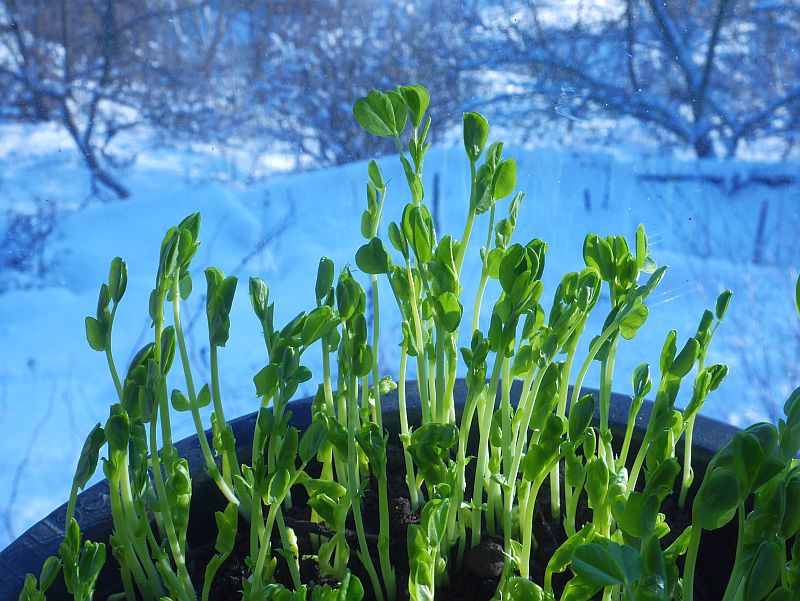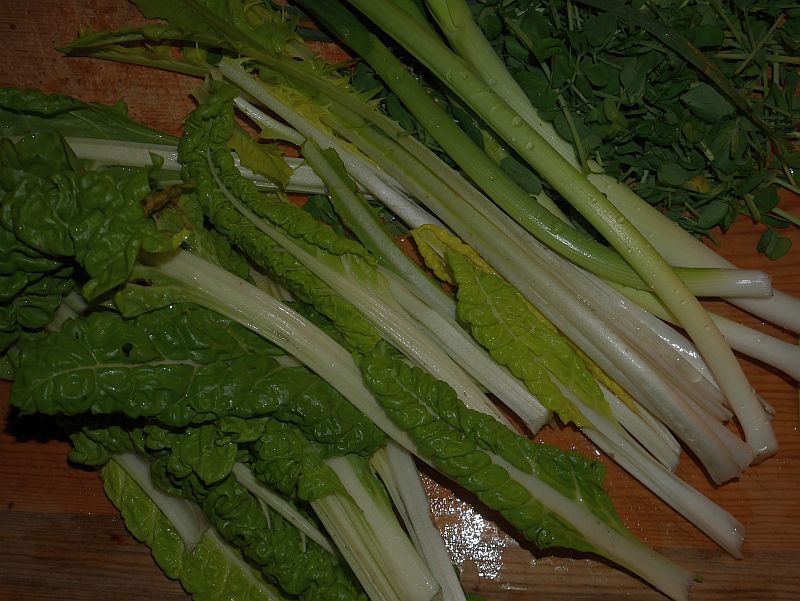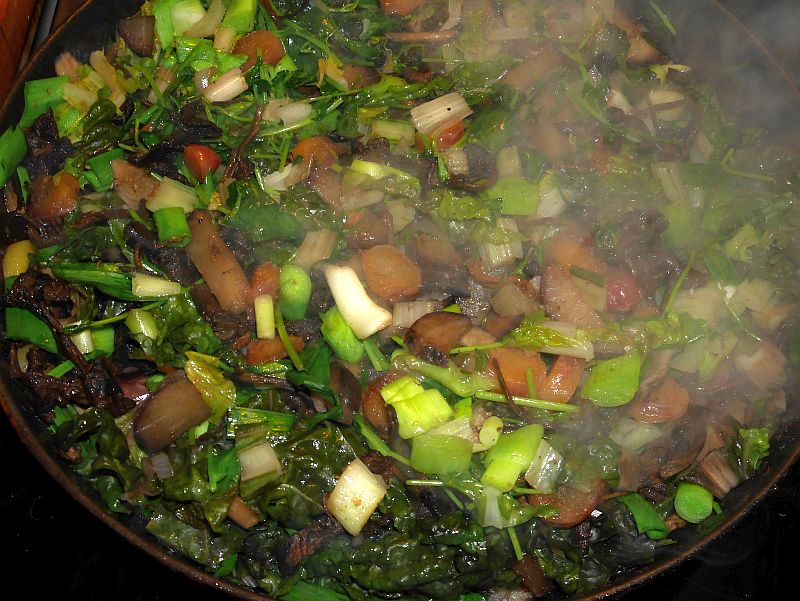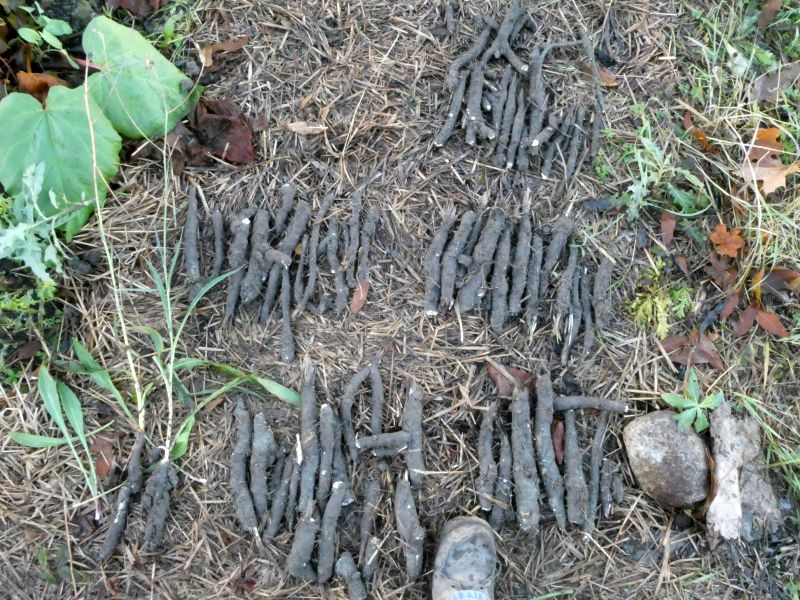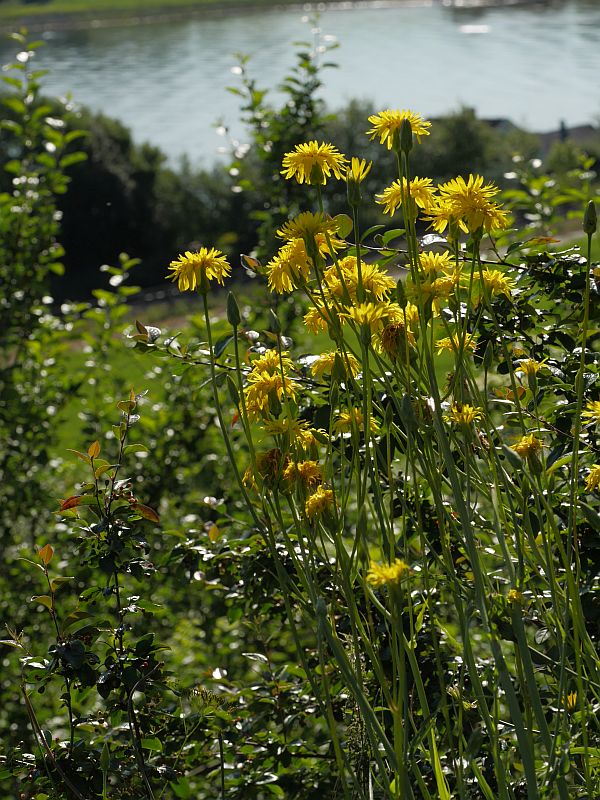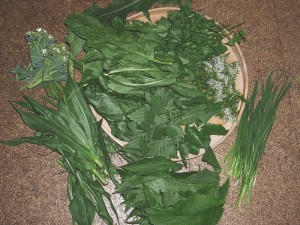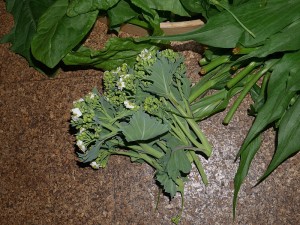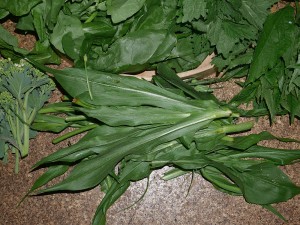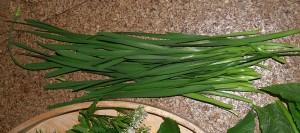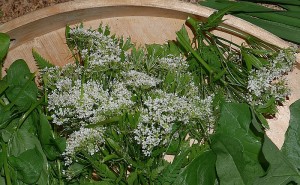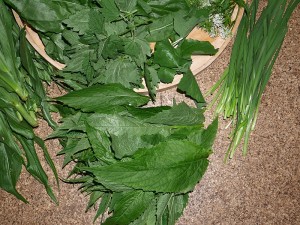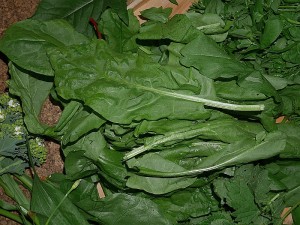People are always asking me for recipes. I rarely follow recipes as my ingredients vary so much and I just use what I have available. However, I do follow a number of basic, mostly lacto-vegetarian recipes which I’ve evolved to my liking over the years. For instance, last night I used
a) Pea shoots (erteskudd), harvested about 25cm high (before they get too coarse to use; I don’t cut them right down to the soil as they will then resprout once or twice before giving up; to do this, they must be grown in a bucket or similar in deep soil); the peas were a mixture of about twenty home grown varieties, including several heirlooms such as Norwegian Jærert and Ringeriksert).
b) Swiss chard / mangold (it’s been too cold for this to regrow in the cellar where it’s planted in soil)
c) Chicory “Catalogna gigante di Chioggia” (sikkori) (this had resprouted in the cellar from the roots)
d) Leeks / purre (also stored in soil in the cellar)
e) Yacon (sliced tubers)
f) Scorzonera / scorsonnerot (sliced tubers)
g) Oca (oka) (Oxalis tuberosa)
h) Garlic / hvitløk
i) Chili / chili
j) Bulb onions / kepaløk
k) golpar (ground seed of various Heracleum species; bjørnekjeks / Tromsøpalme)
The roots are stir-fried first (in olive oil), then the onions are added and at the end the greens for 5-10 minutes, finally mixing in chili, salt and pepper. Served either over whole grain spelt pasta or mixed as a risotto (I use barley normally for a barlotto) with strong cheese or parmesan.
The roots are stir-fried first (in olive oil), then the onions are added and at the end the greens for 5-10 minutes, finally mixing in chili, salt and pepper. Served either over whole grain spelt pasta or mixed as a risotto with strong cheese or parmesan.

